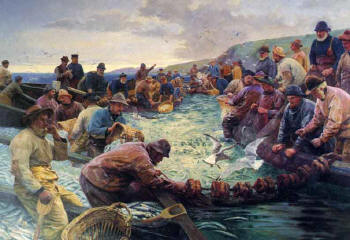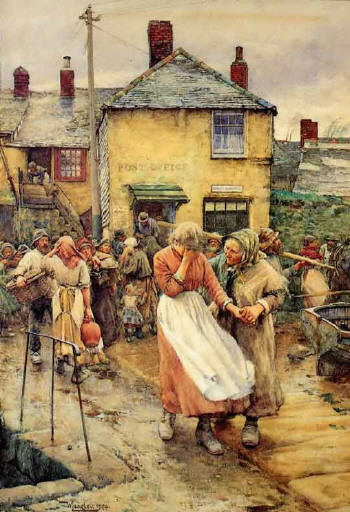|
|
| home | features | exhibitions | interviews | profiles | webprojects | gazetteer | links | archive | forum |
|
Artists in Newlyn
and West Cornwall: 1880 - 1940
Peter Waverly reviews the recently published book edited by Melissa Hardie
The book is divided into three sections. The first covers the early years before art became an established part of the region’s life. Ann Round has written an authoritative piece on the Royal Cornwall Polytechnic Society (the first in Britain), describing its beginnings in 1833 and how it became a conduit for artists to display their work. Professor Charles Thomas has described the beginnings of photography in West Cornwall, although mention of local camera clubs would have enhanced the topic. Next is the story of the 150 year old Penzance School of Art. Written by the patron, the feature tells of this the first art school west of Bristol to begin the formal teaching of art; its later art museum providing the location for the Newlyn School’s debut exhibition. Having dealt with the early art scene, the book then broadens its compass by describing how art proliferated out of the newly begun art colonies of Newlyn and St. Ives. An article from 1889 on art in Newlyn, is followed by David Tovey’s history of the St. Ives art colony. More historical articles and cuttings follow - including reminiscences by Stanhope Forbes himself. There are pieces describing Newlyn artists such as Walter Langley (picture below left) and Frank Bramley, and artist- couples like Gertrude and Harold Harvey or Ernest and Dod Proctor. This section includes a short but informative entry by modern sculptress, Andrea Garrihy, who writes knowledgably about those gifted in the art of stone carving who came to prominence in the region. The essay also details the links that the Vorticist Frank Dobson had with Newlyn.
Cornish references and biography wind up the book’s final section which in themselves makes for a fascinating read as it reveals much of the sources that went into its creation, and complements the informative introduction, by editor, Melissa Hardie, which explains the book's purpose and thanks all those contributors with their specialist knowledge that helped create such a peerless piece of work. The book is a gold mine of artistic information and will no doubt surprise art connoisseurs with some of the names its links with the far west of Cornwall. As such it is already a standard text for anyone involved in study of the topic or just casually interested in British art. It may not be definitive of its subject, but it comes very close.
14/12/09 |
|
|


